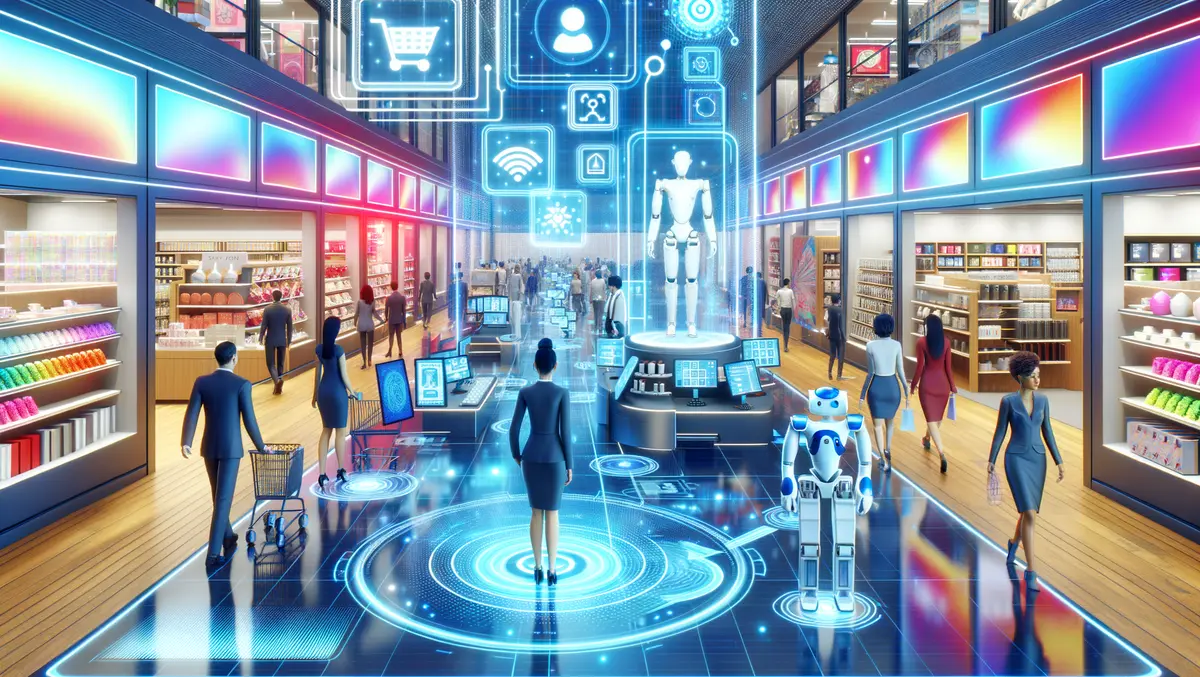
Artificial Intelligence and the Retail Personalisation Revolution
Retail has already experimented with generative AI for language-based applications in areas like customer support, but predictive AI also delivers results. Critical functions like promotion spending, offer permutation and big-data-based consumer trend forecasting are already possible because of the retail industry's primacy of numbers (specifically, UPCs). Generative AI has its uses, but predictive AI is transformative for an industry built on barcodes.
But with the next generation of advancements in AI, we're on the verge of achieving retail marketing's holy grail: true one-to-one personalisation. This is crucial because recognising the individuality of each shopper and delivering a custom retail experience that reflects their unique needs and desires is a must to remain competitive, especially with the growing competition from eCommerce pure-plays like Amazon. Consumers today don't just want personalisation. They expect it.
Eagle Eye's recent eBook, AI and the Current State of Retail Marketing quotes research demonstrating that 71% of consumers expect personalisation. And even more (76%) are frustrated when they don't receive personalisation. It comes as no surprise then that AI adoption in retail is expected to surpass 80% in the next three years.
Three critical points for retailers:
- The need for data quantity and quality: Predictive AI is an exciting development in retail, but it remains in its early stages. Just as future customer behaviour cannot be predicted from a single data point, usable retail AI outputs (like measuring a shopper's brand affinity) need sufficient data to be effective. Similarly, AI models trained on poor-quality data will generate subpar outputs. Therefore, pre-processing data, from that perspective, is of paramount importance.
- Optimal integration of AI outputs: When implementing an AI model's outputs, there is a trade-off between full automation (AI outputs trigger events such as emails, promotion offers sent to clients, generated images used for real-time ads, etc.) and systematic manual review. Sometimes, the choice is obvious. However, finding the right implementation balance often requires adapting existing tools (or utilising purpose-built monitoring dashboards), putting common-sense guardrails in place, and enforcing manual review when AI predictions are uncertain.
- An AI-driven virtuous circle: A significant driver of the relevance of AI outputs (prediction/content) is the ability to observe whether predictions are correct – or not. This allows for the next round of AI system optimisation, driving performance upwards. This continuous improvement cycle can end up being a solid competitive advantage. The first step of the journey to AI integration might seem high, but retailers should understand that optimisations multiply quickly, and the initial performance improvements are only the beginning.
Personalisation for better outcomes
It's widely accepted that personalisation is the next frontier of the retail marketing landscape. However, to achieve this, retailers need to leverage all of the data at their disposal. And that's where AI comes in, allowing retailers to move from 5 percent data utilisation to close to 100% data utilisation, pumping up the value of this coveted asset brands already have. Forget eight offer variations for 10 million customers. With AI, we're looking at the potential of 10 million variations for 10 million customers.
Personalisation and AI in action: Who is getting it right?
The personalised challenges that Carrefour, one of the world's largest grocery chains, is running, together with its suppliers, is probably the most advanced, personalised loyalty/promotional program being implemented at scale today. It's powered in part by AI and machine learning algorithms. And it's something Australian retailers can take inspiration from.
Carrefour's Challenges, built and run by Untie Nots (part of the Eagle Eye group), uses AI to create custom thresholds and goals for loyalty program members based on user purchase history, offer frameworks from suppliers, and predictive analysis of what will trigger the next desired action.
The gamification of the shopping experience through the Challenges initiative provides "the nudge" that is very effective at incentivising customers and members to engage with Carrefour, its promotions and its loyalty program.
Powering next-generation retail
The onus is on retailer marketers to maximise the potential of AI to overcome the challenges in today's dynamic landscape – or risk falling behind. AI is set tol impact personalisation efforts, the importance of data in building predictive models, and how retailers can optimise AI outputs for maximum results.
As we navigate this new landscape, organisational readiness, strategic planning, and ongoing optimisation will be key to realising AI's full potential. With each advancement, retailers move closer to unlocking new dimensions of customer engagement and profitability, setting the stage for a future where AI-driven personalisation becomes not just an expectation, but a cornerstone of retail excellence.
Find out more about AI and the current state of retail marketing in Eagle Eye's latest eBook.